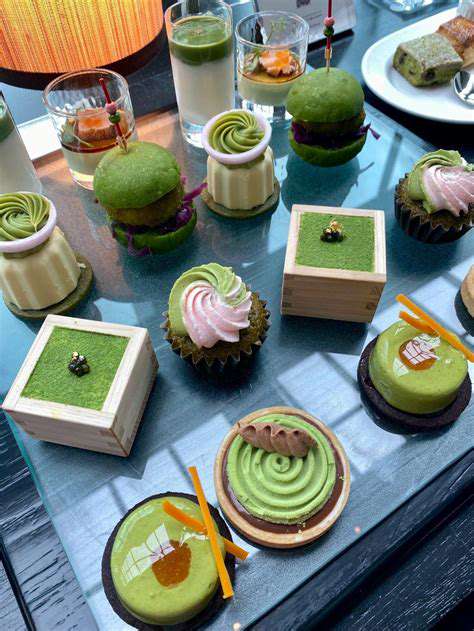A Cultural Guide to Visiting Kyoto, Japan
Ukiyo-e, literally pictures of the floating world, are a captivating genre of Japanese woodblock prints that flourished during the Edo period. These vibrant and often whimsical prints depict a wide range of subjects, from everyday life and landscapes to historical events and theatrical scenes. The distinctive style, characterized by bold lines, flat colors, and a focus on capturing the fleeting beauty of the moment, has captivated art enthusiasts for centuries and continues to inspire artists worldwide. Ukiyo-e prints offer a fascinating glimpse into the culture and aesthetics of Edo-period Japan.
The process of creating ukiyo-e involved meticulous carving into wooden blocks, each block representing a color. The intricate details and vibrant colors showcased in these prints highlight the skill and dedication of the artisans who produced them. Furthermore, they are a significant part of Japanese art history, reflecting the social and economic trends of the time.
Ceramics: A Long History of Artistic Expression
Japanese ceramics boast a rich history, dating back centuries. From the delicate porcelain of the Imari ware to the rustic charm of stoneware, each type of pottery tells a story. The artistry of Japanese ceramics often lies in the interplay of form, function, and aesthetic appeal, with the use of glazes and firing techniques contributing to the unique character of each piece. These craft traditions are deeply rooted in the country's culture, reflecting the philosophy and values of the time, showcasing a remarkable evolution of techniques and styles.
The Art of Tea Ceremony: Chanoyu
The Japanese tea ceremony, known as Chanoyu, is more than just a ritual; it's a profound practice that emphasizes mindfulness, respect, and the appreciation of beauty in simplicity. The meticulous preparation of the tea, the arrangement of the tea room, and the interactions between participants all contribute to a serene and meditative experience. This ancient practice is a powerful demonstration of Japanese cultural values, focusing on harmony and the pursuit of inner peace.
Calligraphy: A Timeless Art Form
Japanese calligraphy, known as Shodo, is a profound art form that involves the careful use of brushes and ink to create elegant characters. Calligraphers meticulously shape each stroke, paying close attention to the balance, rhythm, and flow of the characters. It's an art that emphasizes the spiritual connection between the artist and the medium. The beauty and elegance of Shodo calligraphy are a testament to the deep cultural significance of the written word in Japan.
Ikebana: The Art of Floral Arrangement
Ikebana, the Japanese art of flower arrangement, is a captivating practice that goes beyond merely arranging flowers. It involves considering the balance, harmony, and symbolism of the flowers, stems, and foliage in relation to the vase. Ikebana is a visual art form that embodies Japanese aesthetics, showcasing an appreciation for natural beauty and the ephemeral nature of life. It demonstrates the ability to create a miniature world within a space, expressing both artistic vision and spiritual intent.
Lacquerware: A Masterful Technique
Lacquerware, a traditional Japanese craft, involves applying multiple layers of lacquer, a natural resin, to create stunning and intricate designs. The process requires immense skill and patience, each layer carefully applied and polished to achieve a smooth, glossy finish. The beauty and durability of lacquerware make it a prized possession, reflecting the dedication and artistry of the craftspeople who meticulously create these remarkable works of art. It's a testament to the Japanese mastery of craftsmanship, showcasing the intricate details and the enduring appeal of this art form.
Kimono: More Than Just Clothing
Kimonos, the traditional Japanese garments, are far more than simple clothing; they are a powerful expression of Japanese culture and history. The intricate patterns, vibrant colors, and meticulous tailoring of kimonos reflect the social status and occasion of the wearer. Kimonos represent a deep connection to tradition and a respect for the artistry involved in their creation. More than just clothing, kimonos are cultural symbols that showcase the rich heritage of Japan.
Exploring the Culinary Delights of Kyoto

Unveiling the Global Tapestry of Flavors
Culinary traditions around the world offer a breathtaking exploration of diverse tastes and textures. From the vibrant spices of India to the delicate herbs of France, each region boasts a unique culinary heritage, often deeply intertwined with its history and culture. These culinary traditions are more than just meals; they are cultural expressions, passed down through generations and celebrated in countless ways. This rich tapestry of flavors is a testament to the creativity and ingenuity of humankind.
Exploring these global cuisines allows us to connect with different cultures on a deeper level, fostering understanding and appreciation. Each dish tells a story, reflecting the environment, the ingredients available, and the values of the people who created it. This journey of discovery is not just about tasting; it's about experiencing the world through the lens of food.
The Art of Presentation and Aesthetics
The presentation of a dish is often just as important as its taste. A beautifully arranged plate can elevate the dining experience, transforming a simple meal into a work of art. Attention to detail in plating, garnishing, and the overall aesthetic contributes significantly to the enjoyment of the meal. Skilled chefs and culinary artists understand the power of visual appeal and use it to enhance the overall experience.
The skillful arrangement of ingredients, the use of colors, and the interplay of textures all play a role in creating a visually captivating presentation. This artistic approach elevates the entire dining experience, making it more engaging and memorable.
The Science Behind Flavor Combinations
The science of flavor combination is a fascinating field that delves into the complex interplay of taste and aroma. Certain ingredients complement each other, creating harmonious and exciting flavor profiles. Understanding these principles allows chefs to craft dishes that are both delicious and innovative. By carefully considering the chemical interactions between ingredients, chefs can unlock new levels of flavor and create truly unforgettable culinary experiences.
This knowledge allows for the precise creation of dishes that resonate with specific palates and create unique sensory experiences. Understanding the science behind flavor combinations opens doors to limitless possibilities in the culinary world.
The Importance of Fresh Ingredients
The quality of ingredients is paramount in creating exceptional culinary experiences. Using fresh, high-quality ingredients is essential for achieving optimal flavor and texture. Fresh produce, meat, and seafood offer a vibrant taste and a satisfying mouthfeel that is simply unmatched by their processed counterparts. This commitment to freshness is a key element in elevating dishes to truly exceptional levels.
Fresh ingredients provide the best possible flavor profiles, contributing to a more wholesome and satisfying eating experience. This commitment to freshness is vital for creating a dish that truly reflects the artistry and passion of the chef.
Sustainable Practices in Culinary Arts
The culinary world is increasingly recognizing the importance of sustainability. Using locally sourced ingredients, minimizing food waste, and supporting ethical farming practices are crucial steps in creating a more responsible and sustainable food system. Embracing sustainable practices not only benefits the environment but also supports local communities and promotes a more ethical food chain. This conscious approach to sourcing ingredients ensures a more responsible and sustainable future for the culinary arts.
Sustainable practices are crucial for culinary arts because they ensure the health of the environment. By prioritizing local and sustainable options, chefs can create dishes that are both delicious and environmentally friendly.
The Evolution of Culinary Trends
Culinary trends are constantly evolving, reflecting societal shifts, technological advancements, and changing consumer preferences. From farm-to-table movements to the rise of fusion cuisine, the culinary landscape is dynamic and ever-changing. These trends often emerge in response to social and environmental concerns, creating a constant cycle of innovation and adaptation. This ongoing evolution ensures that culinary experiences remain fresh, exciting, and relevant.
Understanding these trends allows chefs to adapt and innovate, creating dishes that are both satisfying and reflective of the current cultural moment. This dynamic nature of culinary trends ensures that food remains a vibrant and evolving art form.
Beyond the Tourist Trail: Discovering Hidden Gems
Exploring the Enchanting Environs of Arashiyama
Beyond the bustling crowds of Gion and the iconic temples, Arashiyama offers a tranquil escape into the heart of nature. Wander through the bamboo forest, its towering stalks creating a mesmerizing tunnel of green. Experience the serene beauty of the Hozugawa River, where you can take a relaxing boat ride or simply observe the flowing water. This less-trafficked area reveals a different side of Kyoto, one steeped in natural wonder and quiet contemplation, ideal for those seeking a respite from the city's energy.
Unveiling the History of Nishiki Market
While often overshadowed by the grandeur of other Kyoto sights, Nishiki Market offers a captivating glimpse into the city's culinary heritage. This vibrant market isn't just a place to grab a quick bite; it's a sensory experience, brimming with aromatic spices, fresh produce, and the sounds of bustling vendors. Delve into the rich history of this iconic market, observing the traditional methods of food preparation and the dedication of the vendors who have passed down their craft for generations. It's a testament to the enduring traditions of Japanese cuisine, and a must-see for any visitor seeking a deeper understanding of Kyoto's culture.
Discovering the Artistic Soul of Kamogawa River
A leisurely stroll along the Kamogawa River provides a serene contrast to the city's more bustling areas. The riverbanks are lined with traditional teahouses, inviting you to pause and savor the tranquility of the moment. Observe the intricate architecture of the bridges spanning the river, each with its own unique story to tell. The river itself is a beautiful artery of life, connecting various districts, and providing a pathway for the reflection of the surrounding beauty.
Beyond the immediate visual appeal, the Kamogawa River holds a deep significance in Kyoto's history and cultural landscape. It's a place where you can truly connect with the essence of the city, far from the typical tourist hotspots.
Delving into the Spiritual Heart of Fushimi Inari Shrine
While the iconic thousands of vermillion torii gates of Fushimi Inari Shrine are a popular tourist destination, the true beauty lies in the journey itself. Venture beyond the throngs of visitors and explore the winding paths that lead deeper into the mountain. The shrine's vast expanse, filled with intricate details and historic significance, invites you to contemplate the spiritual heart of Kyoto. The quiet contemplation within the depths of the shrine offers a profound connection with Japanese spirituality and a unique opportunity to appreciate the awe-inspiring architecture.
Unearthing the Hidden Gardens of Kyoto
Kyoto is renowned for its exquisite gardens, but many hidden gems lie beyond the well-trodden paths of the most famous attractions. Venture off the beaten track to uncover tranquil courtyards and meticulously maintained gardens, often nestled within temples or private residences. These hidden oases offer a chance to appreciate the traditional Japanese aesthetic of harmony with nature, where serenity and beauty intertwine to create a truly unforgettable experience. The beauty of these hidden gardens lies in their ability to transport you to a realm of peace and tranquility, far from the bustling city outside.









![How to Travel on Points and Miles [Travel Hacking]](/static/images/27/2025-05/StayingUpdatedontheLatestTravelHackingTrendsandOpportunities.jpg)

